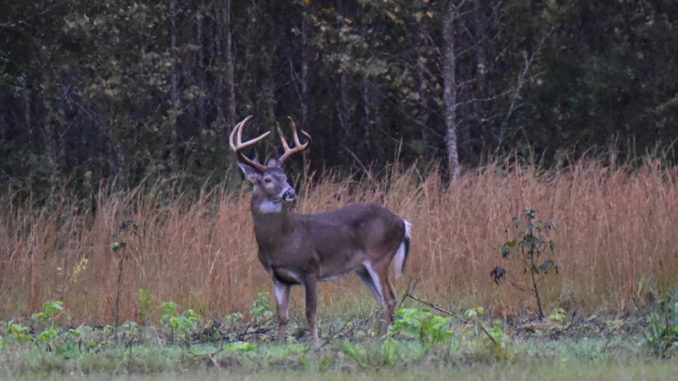
The woods and fields get real busy during the rut
A hunting license enables outdoorsmen to chase a long list of game species throughout the year.
Even though bushytails, cottontails and some feathered varieties are popular among hunters in the Carolinas, the sheer numbers of deer hunters far outweigh every other game species available on Carolina turf. And November is typically a hot month to encounter a trophy buck in places and at times when hunters may least expect it.
The white-tailed deer rut typically begins in September when the sweet smell of estrus begin filling the food plots and woodlots. As soon as the opportunity arises, bucks do not waste any time and begin looking for an available mate.
By October, breeding is well under way, leading into November when buck activity can peak along with hunting pressure. It is the busiest month in the woods for hunters and for deer activity.
Big surprises happen during the rut
For many hunters, the hit list is well established through two months of field surveillance. But the November rut can surprise hunters, no matter how many trail cameras are deployed. Food plots, agriculture fields, swamps, cutovers or a mature hardwood ridge can be the final resting place for that true trophy.
Most bucks will remain within their home ranges, even during the heavy breeding periods. But it’s also not uncommon for bucks to slip out of their comfort zones in a hormone-driven trip chasing a female in heat or just on the prowl for some available mates. And these slips out of their comfort zone can be a half-mile across the swamp to a neighboring farm or a full-fledged 10-mile trek. Predictability of buck movement in November can be indeterminate. As a result, any hunting stand on any hunting property can be ground zero for a lifetime buck.
Suspending time
Timing can also be unpredictable. Sunrise or sunset are not always the times he shows up, either. The arrival of a trophy buck around the stand can happen at just about any time. Predictability and patterning a big buck is nearly impossible. Leaving a little time to take short rests, deer are on their feet for most of the day and night. And hunters can take that trophy buck at almost any time of day.
Trail cameras can bring mixed results for hunters this time of year. Their data can be fantastic and predictable during late summer and early fall. But when the rut takes off, all bets are off. However, if hunters have a way to monitor activity on a daily basis, they can discover a newcomer and maybe get a chance at him before he heads to another farm or back to his home territory. Trail cameras with cellular notifications can be super helpful during this time due to the instant notification feature. Nevertheless, hunters can still pattern overall deer movement or movement of does onto major food sources that can assist hunters with being in the stand at the most probable time.
Bottom line, hunters should put as much time in the deer stand this month as possible. The arrival of bucks on stand can be unpredictable. Always anticipate a surprise, because it happens every day in the peak of the rut.
Hunting pressure up? Deer will find water
Much of the Carolinas’ acreage is covered with wildlife habitat in one form or another. Even around cities and town where few trees and wooded areas are available, deer flourish in a varied habitat. Yet most hunters put the hammer down, hitting their deer properties every chance they get.

After a few months of heavy pressure, deer quickly smarten up and seek out areas less pressured by hunters — especially in areas where hound-hunting is a mainstay. Deer will seek out water sources for protection. These can be excellent places to intercept a big buck.
No doubt, deer are affected by hunting pressure. And they are smart enough to realize swamps, creekbottoms and places inundated by water are fantastic places to evade capture and avoid conflict. Hunters accustomed to hunting with hounds understand this concept better than anyone else. Every time a big buck is jumped by the dogs, the deer almost always heads straight to the swamp. For hunters who understand this, these water-filled wildernesses can be excellent places to hunt.
Hunters can hunt on the edges of these swamps or at swamp intersections or places where other water courses intersect. Deer will follow these water courses like a road map. And hunters can set up along them and get enlightened to what has been lurking for months on their properties.


Be the first to comment